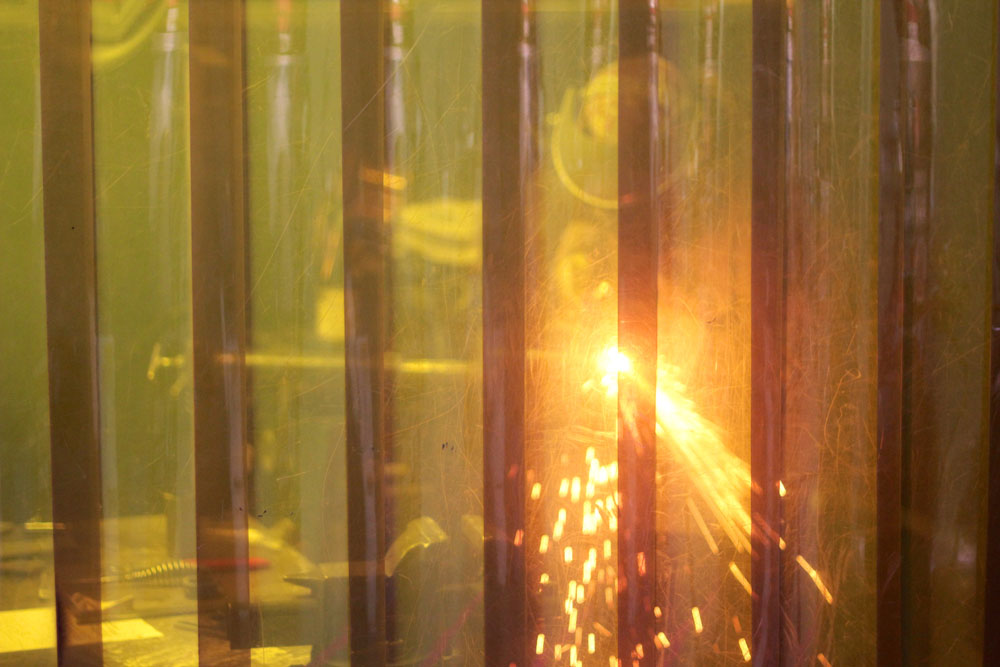Taking on the trades
By Jacquelin Bhandari
In 1991, Statistics Canada recorded a total of 1,070,300 skilled tradespersons in processing, manufacturing and utilities. The number of employees in this group has decreased by the hundreds of thousands every four years. And as Canada’s beloved baby boomers reach retirement age, the labour gap in the industrial trades sector will only continue to widen.
Many training programs in post-secondary institutions have begun to answer the call to reverse the labour shortage among industrial trades. The United Association of Journeymen and Apprentices, better known as the UA, has also played a large role in promoting training for technical trades through their constituents all over the United States and Canada.
Enter the Technical Trades Academy, supported by UA Local 67 and the Ministry of Training, Colleges and Universities, and spearheaded by appointed training co-ordinator Ian Harper.
Harper, who remains at the helm of the Technical Trades Academy, attributes the institution’s initial success to support from UA Local 67, followed by a series of partnerships with the Niagara Peninsula Aboriginal Area Management Board (NPAAMB), Huronia Area Aboriginal Management Board (HAAMB) and, of course, a number of government grants. Harper also sits on the board for the Aboriginal Apprenticeship Board of Ontario (AABO), playing an active role in increasing the number of aboriginal people employed in trades.
The Technical Trades Academy’s first facility stood at a humble 10,000 square feet in Hamilton, Ontario. But now, the trade school has expanded to a 33,000-square-foot building in nearby Brantford. As a recognized non-college training delivery agent, their focus is on developing students’ skills in the heavy industrial trades like welding, plumbing and steamfitting. The training institution offers pre-apprenticeship training, especially for First Nations communities, with the hopes that they will move into an apprenticeship within UA Local 67, leading to potential employment.
Valerie Vanderwyk, a long-time employee at the Technical Trades Academy, says that, “so many incredibly talented apprentices have come to UA Local 67 as a direct result of pre-apprenticeship training.” Because the skills taught at the Technical Trades Academy are transferrable between trades, employment rates for students, upon completion of their training, is 85 percent.
“It was hard to get people from the reserves in the start,” recalls Harper. Since he knew people living in the nearby Six Nations of the Grand River Native Reserve, he would go door to door, asking if anyone would sign up for pre-apprenticeships. Now, the Technical Trades Academy gets help from First Nations community partners to recruit talent, so that the training institution can focus on providing top-notch education.
All teachers who instruct at the Technical Trades Academy are expected to be certified by the Ontario College of Teachers or have equivalent teaching experience. Some teachers have even gone back to university to gain OCT certification.
As a former teacher at the community college level, he and his team at Technical Trades Academy saw that students in apprenticeship and pre-apprenticeship programs needed a teaching curriculum designed to teach both theory and practice. Harper says that, “it brings a whole new experience to the training of the apprentices if you have someone with a teaching background.”
“Our game is not to make money for the school,” says Harper. “Our job is to train people to get them to work.”
Vanderwyk speaks fondly of the many partnerships they have with various First Nations boards and associations. “There are many options available when we have a clear and open relationship with the partners. Everyone is working in the same direction, and that is for the success of our students.”
But even with the right training and the right placement, Harper knows that some of the problems his students will face are beyond his control.
“The problem is getting these kids on the job, and it’s the same for every group, but it’s more noticeable in the First Nations kids,” Harper admits. But the well-loved educator understands how hard it can be to go where no one has gone before. “We need to get them on the job so that they can get experience and get someone to mentor them in the process.”
Despite the obstacles, Harper and Vanderwyk remain confident in the work being done at the Technical Trades Academy and the talent that continues to grow within it. “I feel very privileged to work for an organization like the Technical Trades Academy,” says Vanderwyk. “It’s very progressive and inclusive with their choices for apprenticeship, for staff and the quality that is there.”
In addition to the work they do with First Nations youth, the team at the Technical Trades Academy also help women and persons with impairments find encouragement, and employment, in Ontario’s many trades. According to Harper, giving different groups of people the opportunity to learn a trade is more than just a growing trend, “it’s the right thing to do.”
More information about the Technical Trades Academy can be found at www.technicaltradesacademy.ca.







